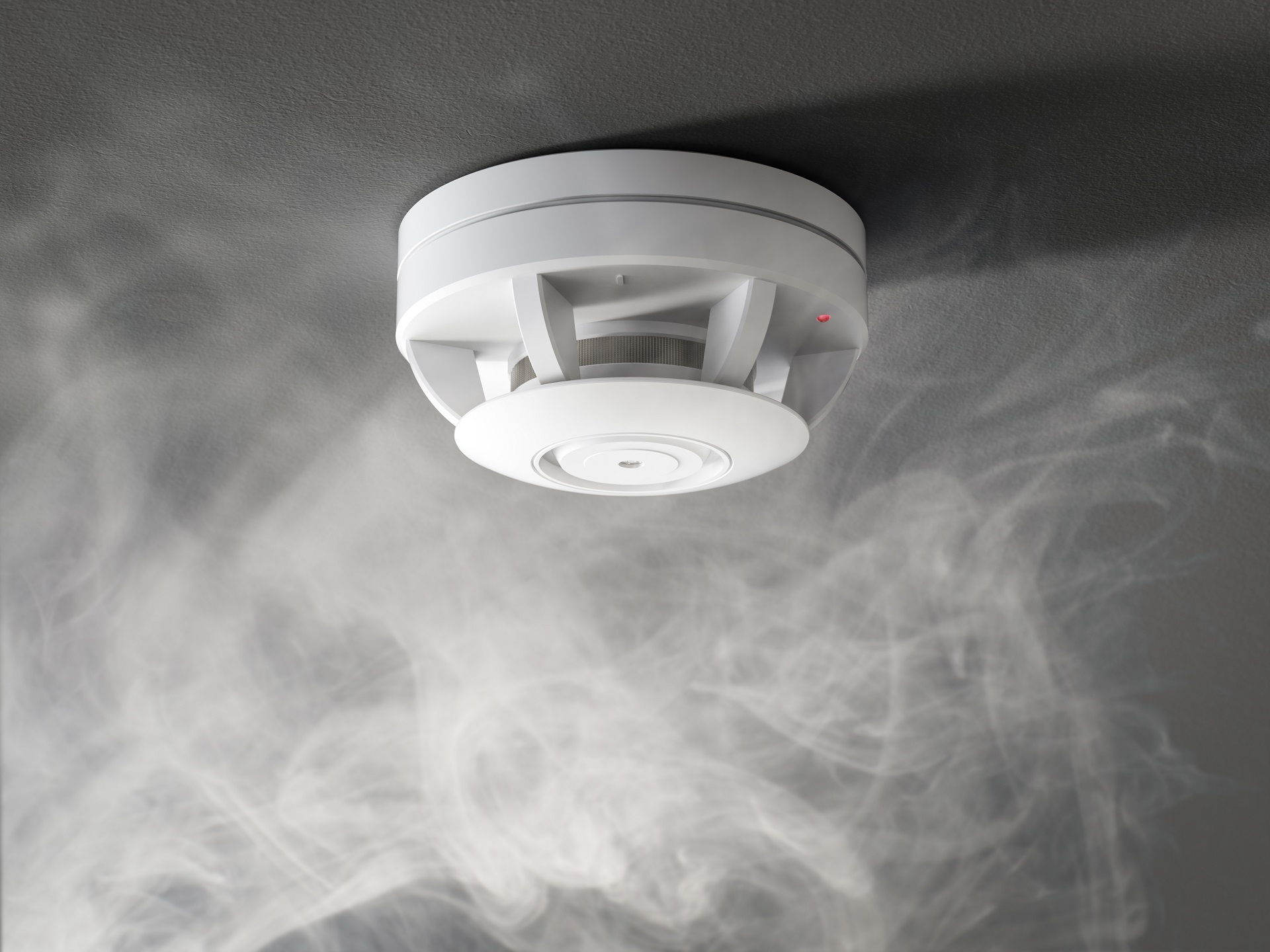When was the last time you checked where your smoke detectors are placed? Most people install them and forget they exist until one starts to chirp or trigger a false alarm. But the truth is, where your smoke detectors are placed can make all the difference when it comes to protecting your home and family. Proper placement isn’t a set-it-and-forget-it kind of job. It requires some thought, especially with how smoke travels and how quickly a fire can spread.
Whether you’ve recently moved into a new place or you’ve been in your home for years, it’s worth taking a fresh look at where your detectors are currently installed. Placement matters more than most people think. The right locations can give you more time to act, help alert others quickly, and even minimize damage. If you’re unsure or it’s been a while since they were installed, this is a good time to think through each room in your house and make sure those alarms are where they should be.
Key Areas For Smoke Detectors
Every home should have smoke detectors placed in specific spots to give everyone inside the best chance to react if a fire happens. Some of the most important areas are often the ones we don’t think twice about, even though we use them every day.
Start here:
1. Bedrooms – A smoke detector should be placed inside every bedroom. People are most vulnerable when they’re sleeping, especially if doors are closed. An alarm going off inside the room gives immediate warning so someone can wake up and get to safety fast.
2. Hallways Outside Sleeping Areas – In addition to having them inside bedrooms, make sure there’s another one in the hallway outside each sleeping area. This adds an extra layer of coverage in case a fire starts from another part of the house and moves toward the bedrooms.
3. Living Rooms Or Family Rooms – These are common spaces where electronics, candles, space heaters, or fireplaces might be used. A smoke detector here helps pick up early signs of danger in rooms where fires could easily start without much notice.
One common mistake is thinking one detector near the stairs or in a central hallway is enough for a whole floor. Unfortunately, smoke doesn’t move that nicely. It follows airflow, heat, and structure, which means it can bypass detectors in open areas unless they’re properly placed.
Think about your home’s layout. If you’ve got more than one hallway or bedrooms are spread out, you’ll need more than two detectors on a single floor. Make sure nothing is blocking detectors either. Curtains, shelves, or furniture can reduce how well they work. Also, plan out where your family will hear alarms the clearest. If someone sleeps with their door closed and the nearest detector is outside the room, they may not hear the alarm right away.
Kitchen And Utility Areas
Fires don’t wait until everyone’s asleep. Many start when someone is cooking or leaves an appliance on. That’s why having smoke detectors near your kitchen and utility spaces is just as important.
Kitchens are high-activity zones. While you don’t want a detector directly above the stove where steam or smoke from cooking can cause false alarms, one placed five to ten feet away helps pick up real threats without reacting to every burnt piece of toast.
Utility areas, like laundry rooms or furnace closets, also carry risk. Dryers can collect lint, and mechanical parts can fail. Placing a detector just outside the room keeps an ear out for trouble while avoiding constant beeping from heat or moisture inside those spaces.
To keep your smoke detectors working properly:
– Check the batteries every month if they’re battery-powered
– Dust them lightly to keep sensors clear
– Test them regularly using their built-in button
– Replace them every ten years even if they still work
An example to think about: a family had a smoke detector just outside their kitchen that kept going off during regular cooking. They moved it about six feet down the hallway, and it still offered solid protection without reacting to every smoke puff from the frying pan. Placement made all the difference.
Properly placing smoke detectors in these active zones not only reduces nuisance alarms but gives you better coverage in areas where trouble is more likely to start.
Stairways And Connecting Spaces
Smoke detectors near stairways and open walkways help sound the alarm across more than one level of your home. If a fire breaks out upstairs and you’re on the main floor, you need to hear that alarm as soon as it goes off. Rooms and hallways can block sound, and if your bedroom is closed off by multiple doors, you might not hear a detector that’s a floor away.
Stairwells act as natural funnels for smoke. Since hot air rises, smoke from a fire in the basement or main level can travel quickly upward without warning if there isn’t a detector in place along that path. That’s why detectors are recommended at the top and bottom of any stairway in a multi-storey home. It doesn’t matter whether it’s the main staircase, a side stairwell, or attic access. If smoke can travel there, a detector should be nearby.
Interconnected detectors are a smart addition in homes with more than one floor. When one goes off, they all do. That way, even if the issue starts in the basement or laundry room, someone upstairs will hear it without delay. It’s especially helpful at night, when people are more likely to be spread out across different rooms.
If you’re not sure whether sound from one alarm will reach every area of your home, try doing a test during the day. Turn on a smoke detector near the kitchen and then walk into each room with the door shut. Can you hear it clearly? If not, consider adding another detector to improve coverage across those problem spots.
Common Mistakes To Avoid When Placing Smoke Detectors
Even with the best intentions, it’s easy to get smoke detector placement wrong. Whether it’s putting them too close to vents or forgetting about a spare room, small mistakes can impact how fast you’re alerted to a problem.
Here are a few common missteps that are better to avoid:
– Mounting detectors next to windows, ceiling fans, or air vents where airflow can interrupt smoke from reaching the sensor. This may delay the alarm or keep it from sounding at all.
– Installing too close to the kitchen, which can lead to false alarms during cooking and cause people to unplug or ignore them altogether.
– Forgetting to place alarms in less-used spaces like guest rooms, home offices, or finished basements where someone may still spend time.
– Placing them on walls instead of ceilings when the device is meant for ceiling use. Smoke rises, and a poorly placed detector might respond too slowly.
– Not syncing alarms across a two-storey or larger layout, limiting how effective the alerts are during a fire on another floor.
A good rule is to think from the point of view of rising smoke and sound travel. If smoke gets trapped or slowed down before it can find a detector, that’s a problem. And if an alarm can’t be heard throughout your home, people might miss the warning.
Avoiding these issues doesn’t take much extra work. It just takes a careful look at each room and a bit of planning. You shouldn’t have to second-guess whether you’re protected when it matters most.
Your Home Deserves Complete Protection
Making sure your smoke detectors are located in the right spots can make all the difference in an emergency. It’s about giving everyone in your home the time they need to notice what’s happening and get out safely. That kind of warning is worth every bit of the time spent reviewing or adjusting where detectors are placed.
If you haven’t thought about smoke detector placement since you moved in, or you’ve recently added new spaces to your home, this is a good opportunity to take a step back and assess. Walk room to room and make sure you’re covered. Smoke can move fast, but the right setup gives you a strong head start.
Taking action now means fewer surprises later. With the right layout in place, you’ll sleep better, knowing your home is ready if something goes wrong.
When it comes to safeguarding your home, placing smoke detectors strategically is incredibly important. Ensuring they’re in the right spots offers extra peace of mind and protection for your family. If you’re interested in expert assistance with smoke detector installation, consider reaching out to ShockFree Electrical. Our team in St. John’s, NL, is ready to help ensure all areas of your home are covered, giving you the assurance that your safety system is both effective and reliable.






